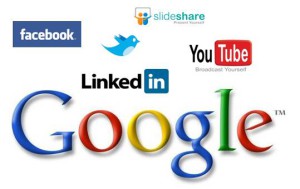Among over one hundred billion in eCommerce sales between January and March of this year, around one and a half percent of retail shoppers purchase products via social media platforms such as Facebook, Instagram and Pinterest.
Data shows that within that one and a half percent, retail shoppers predominantly used Facebook as the way to shop, encompassing eighty-one percent of sales. On the other hand, Pinterest yielded close to eleven percent, while Twitter, Youtube and Instagram consisted of around five percent.
According to the study, shoppers were more inclined to complete transactions via search or email marketing which actually consisted of around seventy percent of purchases in the study.
Although, some brands are concerned with the lack of completed transactions that their brands are yielding on strong social media platforms, the VP of Abercrombie & Fitch, views this digital relationship between the brand and the consumer in a very different light.
Even though Michael Scheiner strongly believes statistically data is an important factor when conjuring up a strong social media marketing plan, he does emphasize the valuable experience that consumers have when they do engage with brands on these platforms.
Essentially, Scheiner’s main takeaway is focused on creating an innovative brand image in order to potential customers to have a unique relationship with the retailer based on authentic interest in the product. In other words, branding proves to be one of the most, if not the most salient motives for retailers to stay active on social media.
As different social media platforms attract different audiences at various times of the day, the need for organic content is in no way long gone or dead. Insight from Mark Aikman, the general manager of marketing at Mercedes-Benz approaches Instagram as a platform geared towards branding.
With Aikman and his team generating organic content on a daily basis for branding purposes, Mercedes’ marketing manager firmly believes that these separate marketing mentalities not only gear towards both short and long-term success, but also produce a digital environment where Facebook is perceived as more of a direct-response platform.
Interestingly enough, although number crunching, quantitative data and statistics generally drive any retailer’s social media marketing strategy, these global brands are holding true to the notion that consumer engagement is an extensive process.
“People who are pinning are building for the future, whether the future is a baby shower four weeks from now [or] a wedding they’re planning four months from now,” said Kate Spade & Co. evp and CMO Mary Beech. “It’s a marathon, not a sprint.”
John Partilla is the CEO of Screenvision, and he’s a veteran of the marketing industry with nearly three decades of experience in a variety of roles. Please read “John Partilla Named Screenvision CEO,” “John Partilla: Screenvision Names Exec CEO – Variety,” “Screenvision Taps John Partilla To Be CEO As It Seeks To Rebuild” and his Screenvision profile to learn more. Also, check out his Crunchbase, Twitter, and LinkedIn.




